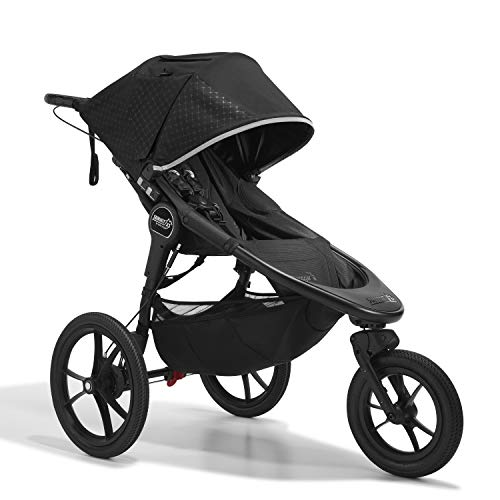Pram vs. Pushchair: Understanding the Key Differences
When it comes to transferring infants and young kids, parents often discover themselves overwhelmed by the different choices offered. Among these options, prams and pushchairs are 2 of the most typical types of baby transport. While the terms are frequently used interchangeably, each has distinct functions and benefits that deal with varied parenting needs. In this post, we will explore the essential differences in between prams and pushchairs, helping moms and dads make informed decisions about which is best fit for their family.
What is a Pram?
A pram, or perambulator, is a type of baby carriage created primarily for newborns and babies. Prams normally include a totally flat lying position, which is essential for newborns who need to lie flat for spine development. A lot of prams come equipped with a deep, enclosed body that provides a cozy and safe and secure environment for the baby, often with extra features such as hoods or covers to shield them from the aspects.
Secret Characteristics of Prams:
- Flat Lying Position: Supports healthy back advancement in newborns.
- Enclosed Design: Protects the baby from wind and sunlight.
- Standard Aesthetic: Often made from products like wicker or fabric, offering a traditional appearance.
- Weight and Bulkiness: Generally heavier and bulkier than pushchairs.
What is a Pushchair?
A pushchair, also referred to as a stroller or buggy, is created for older infants and toddlers who can stay up unassisted. Pushchairs permit several seating positions, consisting of reclining options for naptime. Foldable Double Pram are usually lighter and more nimble than prams, permitting moms and dads to browse hectic areas with ease. Numerous pushchairs include adjustable manages, storage compartments, and can often be folded for hassle-free transportation.
Secret Characteristics of Pushchairs:
- Seating Position: Designed for children who can stay up, with various reclining positions.
- Lightweight and Compact: Easier to maneuver and transportation.
- Flexibility: Many designs are convertibles or can accommodate safety seat.
- Storage Features: Often include baskets for carrying diaper bags, toys, etc.
Secret Differences Between Prams and Pushchairs
Below is a relative table highlighting the vital differences between prams and pushchairs.
| Feature | Pram | Pushchair |
|---|---|---|
| Target Age | Newborns to 6 months (flat position needed) | 6 months to young child age (sitting unassisted) |
| Design | Confined, conventional design | Open, modern-day design |
| Weight | Much heavier, bulkier | Lighter, more compact |
| Seating Options | Flat only | Numerous positions including reclining |
| Manoeuvrability | Less maneuverable due to weight | Extremely maneuverable |
| Storage Space | Restricted | Generous beneath baskets |
Selecting Between a Pram and a Pushchair
Consideration Factors:
- Age of the Child: Choose a pram for newborns and a pushchair for older infants and toddlers.
- Meant Use: If you prepare to do a great deal of strolling or navigating city streets, consider a design that matches your way of life.
- Space: Assess the offered storage in your house or car and how compactly a model can fold.
- Budget: Consider the price range, as prams and pushchairs can vary widely in expense.
- Functions: Look for additional features that may be advantageous for your everyday life, such as cup holders, canopies, or easy folding systems.
Benefits and Disadvantages
Advantages of Prams
- Ideal for Newborns: Encourages healthy spine advancement.
- Comfortable Space: Provides a cozy environment for infants.
Downsides of Prams
- Weight: Heavier and bulkier, making them less practical for everyday usage.
- Restricted Use Time: Generally beneficial just for the first 6 months.
Advantages of Pushchairs
- Versatility: Suitable for longer periods as the child grows.
- Light-weight Design: Easier to carry and maneuver.
Downsides of Pushchairs
- Not Suitable for Newborns: Requires the kid to be able to sit up unassisted.
- Less Protective: Generally more exposed than a pram.
Often Asked Questions (FAQs)
1. Can I utilize a pushchair for a newborn?
A lot of pushchairs are not developed for newborns; nevertheless, many designs feature baby safety seat adapters. Some pushchairs provide a fully reclining seat option that might appropriate for babies, however guarantee the manufacturer validates it's safe.
2. Which is better for travel?
Pushchairs are typically preferred for travel due to their lightweight and compact nature. They can often be folded quickly for transport on public transport and fit more easily in cars and truck trunks.
3. For how long can I use a pram?
Prams are usually suitable for infants until they reach around 6 months of age or when they can support themselves in a seated position.
4. Are there hybrid designs offered?
Yes, many producers produce hybrid designs that can be transformed from a pram to a pushchair depending upon the child's development phase.
5. What should I look for when purchasing a pram or pushchair?
When purchasing, think about security features, ease of usage, durability, weight, and storage. It's likewise a good idea to check numerous designs for convenience before deciding.
Picking between a pram and a pushchair eventually depends upon the age of your child and your way of life preferences. Understanding their distinctions assists moms and dads make informed choices that deal with their family's needs. Moms and dads can take pleasure in the journey of being a parent by making sure that their child's comfort and safety are always focused on, while also considering their own benefit and style.

